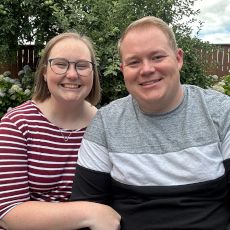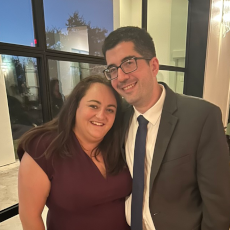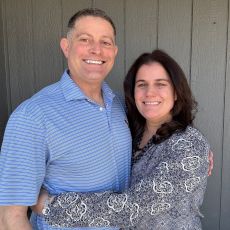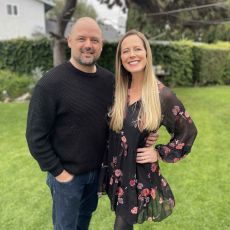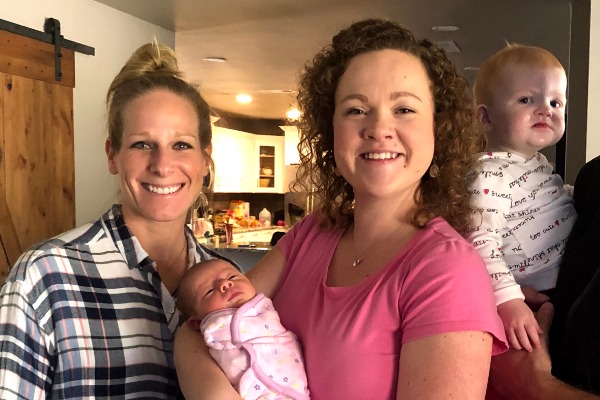I Don't Want My Child Anymore: What Do I Do? [Your Options for Moving Forward]
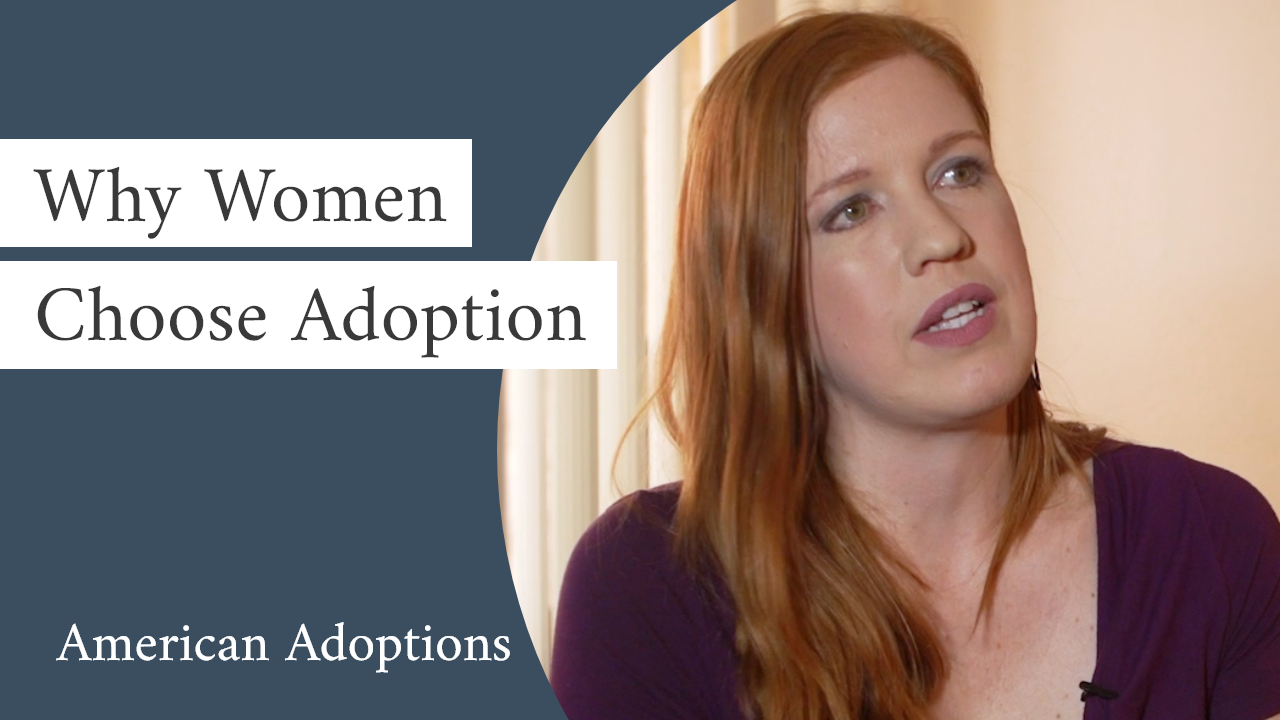
If you’ve thought, “I don’t want my child anymore,” in the heat of the moment, we know it can be scary. If you need immediate help, you can call 1-800-ADOPTION now.
Parenthood is beautiful, but it’s not easy. There are many reasons that people think, “I don’t want my child to live with me anymore.” Perhaps you:
- Underestimated the realities of being a parent
- Have experienced a sudden change in your situation
- Can’t provide the same support and care that you originally thought you could
- Haven’t bonded with your child the way you imagined you would.
No matter what your situation, thinking, “I don’t want my child,” can be a difficult thing to come to terms with. Know that you are not alone — American Adoptions is here to help.
To get help now, call 1-800-ADOPTION.
Understanding Your Emotions
Before you start asking, “What should I do if I don’t want my child anymore?” you need to recognize exactly what your feelings are and identify where they are coming from. Only after you do this can you make the best choice for you and your baby.
All parents have moments where they doubt their ability to raise their child. It’s completely normal; no one is perfect, although many of us expect ourselves to be when it comes to having a child. Parenting is hard, and it can cause anyone to question their ability to raise their child in the way they want to.
Before deciding to act on your feelings, you should ask yourself this question: “I don’t want my children — is this postpartum depression?”
Postpartum depression is more common than people think; up to 1 in 7 women experience it. After a child is born, a parent is coping with a whole new set of challenges, including a newborn that sleeps at odd hours, recovery from their childbirth experience, new financial expenses and more. All of this can easily cause a parent (mother or father) to experience a degree of depression and anxiety.
Postpartum depression can emerge days or even months after delivering a baby, and the disorder can affect anyone. Anyone who is thinking, “Help me; I don’t want my child” should consider reaching out to a trained physician or therapist to address the possibility of this disorder in their lives. If it’s treated properly, you may find that your negative thoughts about your child will disappear.
If postpartum depression has been ruled out, you will need to further evaluate where your thoughts of “I don’t want my children anymore” are coming from.
If you contact American Adoptions, you can always speak to a trained counselor for free (and with no obligation to choose adoption) about your personal situation and the dilemma you are in. They will ask you questions to help you determine why you are thinking about “giving up” your child and help you choose the right path for you and your baby moving forward.
To get free counseling today, please call 1-800-ADOPTION to get the guidance and support you deserve.
Common Questions in this Situation
As you are working through these thoughts, it’s important to ask yourself questions about:
- Your personal goals
- Your wishes for your children
- Any misconceptions you had about parenting
- And more
As you decide which path is best for you, you may have some questions that are common among people in your situation. We’ve answered a few of them for you here.
Helpful Information
1. I don’t want my child anymore. Is there a safe space to bring him to?
You may have heard about something called “Safe Haven Adoption.”
This is a process designed for women who don’t wish to raise their children but didn’t take steps to make a proper adoption plan for their babies. In a Safe Haven adoption, a woman can relinquish her child to the proper authorities without being charged with child endangerment.
If you’re thinking, “I don’t want my child,” Safe Haven may seem like the easiest way to solve your problem. However, all states have different requirements when it comes to the age of a child in a Safe Haven adoption. Usually, children must be only days or weeks old in order for a parent to take advantage of this law.
2. I don’t want my child. Where do I leave her with a new family?
Choosing a new family for a baby isn’t as simple as dropping your child off in a safe and supportive home. Adoptive parents must be approved by certain state laws before they can adopt a child, and you will need to go through certain steps to terminate your parental rights if you are serious about having a new family adopt your child.
Do not look online for a new family to take your child. This is incredibly dangerous, and you will not be able to guarantee the safety of your child once they are placed.
Instead, work with an adoption professional or state official. It may take longer, but it is the best and safest option for your child’s well-being.
3. I don’t want my child anymore. Can child welfare come and get them?
Usually, the child welfare system does not accept voluntary placements.
Because many state programs are understaffed, they often don’t have the resources available to take children whose parents don’t want them anymore. Instead, they focus on finding new homes for children who are in genuine danger or distress in the current custody of their biological parents.
There may be a few options that let you work with child protective services to find a better situation for your child, but these vary greatly by state. Contact your local state agency to find out more.
4. I don’t want my child. Can I give them up for adoption?
The answer to this question often depends upon the age of your child.
While there may be options for adoption of an older child, the most common adoption plans regard younger children — usually three years or younger. This is in the best interest of the child; the older they are, the more traumatic a separation from their biological parents will be.
If you have an older child, you will want to contact your local state agency or an adoption attorney for information about making an adoption plan.
However, if you have a young infant or child, you can usually contact an adoption agency, like American Adoptions, to start the process of finding a new family for your son or daughter. In both situations, you are always welcome to get free information from an adoption counselor at any time.
Your Options if You Don’t Want Your Child
If you’re thinking, “I don’t want my child to live with me anymore,” know that you do have options. In addition to Safe Haven adoption and working with Child Protective Services, there are some more active paths you can take.
These processes will ensure you get to choose the family you place your child with, giving you the opportunity to choose the lifestyle your son or daughter has growing up. These options also give you the opportunity to maintain a relationship with your child after you have placed them with a different family.
It is always a good idea to speak to an adoption professional and family law attorney to find out which options are available to you. Here are a few that you might consider:
1. Temporary Guardianship
Sometimes, people thinking, “I don’t want my child to live with me anymore” don’t necessarily want to terminate their parental rights — but they do wish for a break from parenting to better their situation. This way, they can provide a better home for their child and recommit to their parenting responsibilities.
If this is your situation, you may consider a temporary guardianship. Your parental rights will not be terminated, but custody of your child will be temporarily given to someone you trust to raise your child for a period of time. Your child will be properly cared for while you take the steps to better your personal circumstances.
2. Adoption by a Family Member or Friend
If you are thinking, “I don’t want my child anymore,” you may have someone in mind that can provide the love and support you cannot at this time in your life. You can choose to place your child for adoption with them, known as an identified adoption.
You don’t necessarily have to work with an agency for this path. If you know of a friend or family member who wishes to adopt your child, you can contact a local adoption attorney for more information about this process.
An attorney will describe the necessary legal steps, as well as things you should consider before choosing this path.
3. Adoption Through an Agency
Finally, you can work with an adoption agency to find a family with whom to place your child. There are certain adoption agencies that will accept placement of older infants and will help you find the perfect parents for your child.
This path will give you the opportunity to safely and ethically place your child for adoption, providing you the advantages of knowing the family, determining post-placement relationships and more.
If you have a young infant you wish to place for adoption, American Adoptions is here to help. Our adoption specialists are available to you 24/7 to answer your questions and help you begin your adoption journey.
With our agency, you will:
-
Receive adoption financial assistance. Adoption is completely free to you as the birth parent. We will help cover pregnancy costs and living expenses throughout your pregnancy to ensure you are comfortable and taken care of.
-
Be able to choose the adoptive parents. As a part of your adoption plan, you will be able to list adoptive family preferences. Your adoption specialist will then find adoptive family profiles that match, and present them to you to choose from. This way you will never have to wonder who is raising your child.
-
Decide how much post-adoption contact you would like. Through open adoption, you will be able to stay in touch with your child and their adoptive parents post-adoption so that you know how they are doing and so that they have the opportunity to know where they came from.
“I believe that adoption is something very special, but is not a decision that everyone can make. I don't think that people understand how many people there are in a country and also others that want nothing more than to be parents... I know that not everyone who is faced with an unplanned pregnancy can make the choice to give their child up for adoption, but someday I hope that it becomes more common and others can be more open-minded,” said Nikalit of her adoption experience with American Adoptions.
For more information about placing your baby for adoption through an agency, please call 1-800-ADOPTION today.
If you are looking for more resources for a temporary guardianship or other options for older children, however, you should start by contacting your local department of child welfare or social services.
It can be hard to think, “I don’t want my child” — but, by coming to this page, you have made the first step in responsibly and safely choosing the best path for your family. We know you are in a difficult place at the moment, but remember that there are also resources available to you. Please take advantage of them before making any life-changing decisions.
Disclaimer
Information available through these links is the sole property of the companies and organizations listed therein. American Adoptions provides this information as a courtesy and is in no way responsible for its content or accuracy.




